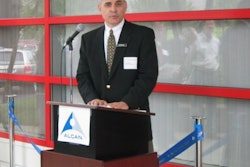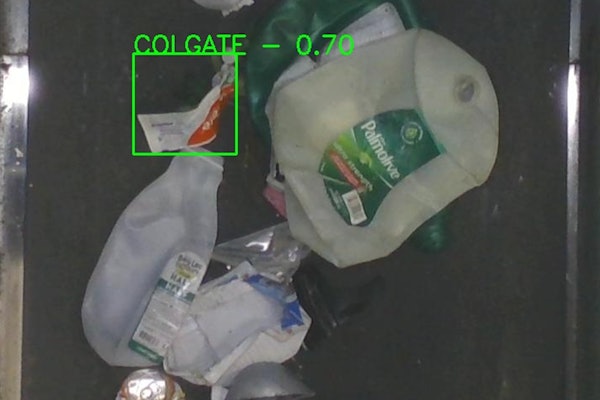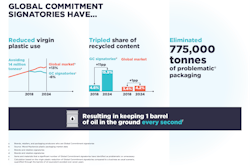More than two of every three participants in this package graphics survey said their companies have not made specific initiatives to cut the cost of package printing or the lead times from artwork to finished packages. However, the remaining 30% were very vocal about how their companies would tackle those two issues.
That was the major surprise in Packaging World’s survey about package graphics, conducted late last year on Packworld.com, the magazine’s Web site.
Many participants have targeted the artwork design and approval process as a way to speed up the process from graphic design to finished packaging.
“We’ve expedited the artwork approval process through the use of electronic sign-offs internationally,” said a packaging executive with a large midwestern cosmetics maker. At a national food company, a packaging executive reported his company is “evaluating the possibility of online proofing.”
“We’ve automated parts of our proofing process, especially involving bar coding,” said a packaging engineer for a maker of nonfood consumer products in the Midwest.
Others indicated that their companies had changed the approval process for designs. A purchasing manager with a major motor oil producer in the Southeast, said: “We’ve improved communication with suppliers to eliminate steps that affect lead times without jeopardizing the project.” A similar plan was described by the maintenance manager for a major brewer in the Midwest.
A production executive for a major national meat processor based on the West Coast had cut lead times by “purchasing graphic computer programs.”
Several participants reported their companies had cut costs and project lead times by moving more design functions in-house. An engineer at a large chemical company in the Southeast said her company was “bringing design back in-house.” The same comment came from a marketing executive at a small manufacturer of medical products in the Northeast. On the West Coast, a packaging engineer for a mid-sized frozen food maker reported his company “was interested in exploring more in-house printing.”
Costs targeted, too
A variety of techniques were being employed to help cut the costs for packaging graphics. A production executive at a small cosmetics maker in the Northeast reported his company has cut costs “by ordering in larger quantities.”
Better graphic asset management was mentioned by a few participants. “We’ve moved to a central source for global color separations,” said a packaging executive with an international maker of cosmetics headquartered in the Northeast. Also in the Northeast, a packaging executive with an international pharmaceutical company reported his company had “established a partnership with color separators to produce all mechanical art, instead of using design firms.”
An R&D executive with a large national juice company said his company has cut costs by “using smaller and less expensive design firms.”
“Moving to digital workflows” was mentioned by participants with two major companies: one a packaging executive with an international electronics maker, the other an R&D executive with a major national tobacco company. “Adding a digital studio in-house” was the choice for cost cutting identified by an R&D executive with a small producer of leisure products on the West Coast. A packaging executive with a southeastern medical products maker said his company had moved into “a direct-to-plate artwork process with its carton supplier.”
Other respondents indicated that their companies had developed a teamwork approach with vendors to cut both lead times and costs. A manager for a major beverage producer in Canada said his company “had created process-improvement teams with representation from suppliers and our customers.” Similar comments also came from an engineer at a large medical device maker in the Midwest and a packaging engineer at a chemical company in the Southeast.
Finally, an R&D executive with a major international food maker explained that his company’s tips for cutting time and costs were “proprietary.”
How to improve the process
The survey also asked participants which parts of the packaging graphics process most needed improving. Not surprisingly, many respondents reported that costs of packaging graphics was the area that most needs improving. And it was not just smaller companies; the same response came from an engineer for an international cosmetics marketer.
Graphics designers don’t always understand the printing technology, said some participants. “Design firms need more knowledge about how a design will print. It’s a challenging balance, because we don’t want to inhibit the design exploration. But as a manager, I include a reality check of how well it will print when I judge the design options,” said a packaging executive for a major pharmaceutical maker in the Northeast.
That sentiment was echoed by the purchasing manager for a West Coast maker of household chemicals: “Coordination between the design firm and the print vendor is critical. We need to incorporate the vendor’s recommendations, based on the limitations of their equipment.”
An engineer with a Southeastern maker of household products wanted to see an improvement in print-width limitations from overseas converters. A packaging engineer with a cosmetics maker in the Mountain States said she sought “more suppliers that would embrace in-house digital prepress technology.” A packaging executive at a large garment producer in the Southeast said he felt that prepress time needed to be reduced.
Lots of technical specifics
A variety of very package-specific issues was on the minds of some participants. One packaging engineer for a large midwestern cosmetics company indicated that his company wanted to see improvements in adhesion of the frost coatings on bottles, plus improve the scuff-resistance of non-UV-cured varnishes. A packaging executive for a food company in the Mountain States said his company sought “reductions in the cost of retort pouch printing in the United States, compared to Japan or South Korea.”
A small manufacturer of frozen pet foods has been frustrated by packaging materials. “We need to improve specifically the types of printing and labels that work well with frozen foods,” said the company president.
An engineer with a large hardware product maker in the Mid-Atlantic States sought more consistent design: “We need a more uniform design across our product portfolios within the same brand.” An engineer with a large midwestern maker of industrial products sought “standardization between divisions, a clear understanding of how to approve print designs between the company and suppliers.” At another hardware maker in the Northeast, a purchasing executive said her company wanted more elaborate packaging graphics, “something that will really pop out at you.”
An engineer with an eye-care solutions maker in the Southwest suggested that printing graphics on-line would be an improvement over preprinted packaging materials. Another engineer, this one with a northeastern pharmaceutical company, said his company was looking for improvements in the coordination of different software programs. “We see discrepancies between internal CAD files and external EPS files for artwork,” he pointed out.
One respondent would like to buck current trends. This purchasing agent for a maker of household tools would like to see “a reduction in SKUs.”
See sidebar to this article: Survey participants
























